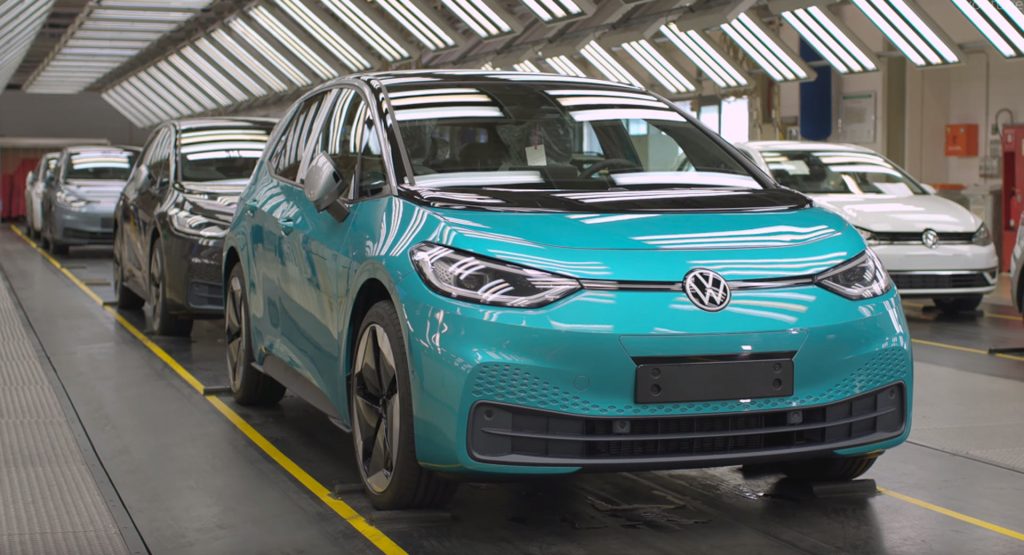The ID.3 is Volkswagen’s most important new model since the introduction of the Golf, and thanks to the two videos below, we have an excellent idea of how the all-electric hatchback is produced.
Construction of the ID.3 is currently being handled by VW’s Zwickau site in Germany, and while the car may be very innovative, it is built in largely the same way as other models, as robots do the brunt of the work.
Also Watch: Here’s a Close Look At The ID.3, Volkswagen’s Most Important New Car In Many Decades
It is perhaps the floor that is the most important part of the ID.3 that houses the battery pack. VW then creates the other powertrain components around this, including the fitment of an electric motor over the rear axle.
You may also notice that the ID.3 features old-school drum brakes at the rear axle, and while that may seem like a bit of a cop-out from the company, traditional brakes are much less important for an EV than there are on an ICE-vehicle due to the effects of regenerative braking.
Volkswagen hopes that the ID.3 will take off and sell in large numbers and we definitely think it has the right ingredients to do just that. One key ingredient to that is that customers will be able to choose between three different battery options, all of which offer a reasonable driving range. The 45 kWh pack, for example, will let you travel for 205 miles (330 km) on a single charge, the 58 kWh provides 261 miles (420 km) of range, and the 77 kWh is good for 342 miles (500 km).
VW says pricing for the ID.3 will start at under €30,000 ($33,161) in Germany.







